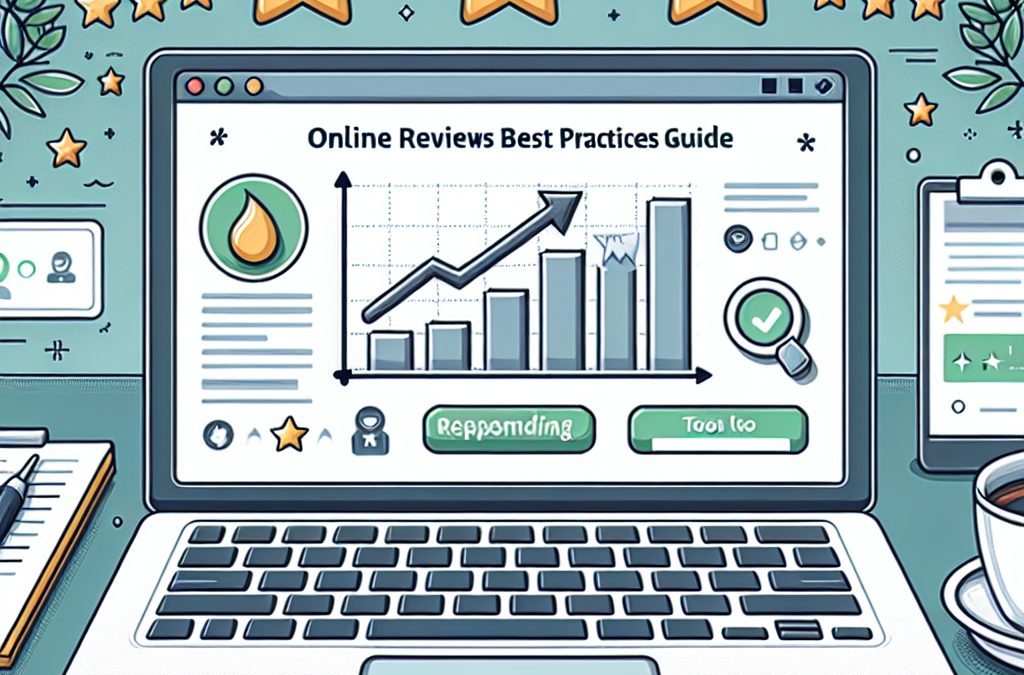Encouraging Customer Reviews
Creating a Simple Review Process
First things first, we need to make it super easy for customers to leave reviews. I’ve learned that if you complicate it, people just won’t bother. A straightforward form or a direct link to a review platform works wonders. After all, who has the time to jump through hoops, right?
Consider sending a follow-up email after a purchase, thanking customers for their business and kindly asking for a review. Personal touches—like addressing them by name—can really drive engagement. Customers are more likely to leave feedback when they feel appreciated!
Also, think about incentives. Now, I’m not advocating for buying reviews, but offering discounts or entry into a giveaway for those who leave feedback can totally boost your response rates. It’s a win-win situation!
Timing is Everything
Have you ever tried to ask for a favor when the timing’s off? Yeah, it doesn’t work! Reaching out for a review shortly after the customer has received your service or product is crucial. They’re still buzzing with the experience, and that’s when you want to capture their thoughts.
If possible, automate this with your email campaigns. For instance, a short email 3-7 days after purchase can serve as a gentle nudge. Just like that little reminder in the back of your mind, it can help jog their memory!
But hey, don’t bombard them with requests! You want to find that sweet spot where they feel inclined to share their thoughts without feeling pressured. Too much can backfire.
Showcasing Reviews
This one’s a biggie! When you collect reviews, flaunt them! Displaying glowing feedback on your website and social media can build trust and credibility with potential customers. I mean, who wouldn’t feel more comfortable buying something if they see others vouching for it?
Use visual elements, like star ratings and snippets of customer feedback, to catch the eye. You want those testimonials feeling vibrant and alive! Make them part of your marketing materials—whether that’s in your newsletters or even in-store if you have a physical location.
Additionally, don’t forget about negative reviews. Responding graciously to these can showcase your commitment to customer satisfaction. It lets potential customers see that you’re not just collecting praise; you genuinely care about all feedback.
Responding to Reviews
Timeliness in Responses
When a customer takes the time to leave a review, they’re reaching out to you, and it’s vital to respond promptly. I’ve found that responding within 24 hours can make a huge difference in showcasing how much you value their opinion. It’s kind of like a conversation—you wouldn’t leave someone hanging, would you?
This quick response signals to future customers that you’re engaged and care about your clientele. Plus, a timely reply encourages more interactions, which can ultimately lead to more reviews in the future.
Consider drafting template responses for different situations—positive, negative, and neutral. This way, you can quickly customize your response without losing that personal touch that comes with sincerity!
Being Professional and Friendly
While it’s essential to remain professional when replying, don’t underestimate the power of friendliness! Personalize your responses to make the reviewer feel heard and appreciated. A little warmth can go a long way in fostering a relationship.
Acknowledge their feelings, whether they’ve had a great experience or encountered issues. It’s like saying, “Hey, I get it! Thank you for sharing!” Positive reinforcement encourages more reviews and also reassures customers that their feedback matters.
Remember, the review response isn’t just for the reviewer; it’s a public statement for all potential customers to see. Make sure it reflects your brand’s values and personality.
Learning from Feedback
Every review, good or bad, is an opportunity to learn something. I’ve made it a habit to regularly analyze reviews to spot patterns. It’s like watching a highlight reel of what you’re doing right and what needs a little TLC.
Negative reviews can be particularly enlightening. They can point out weaknesses in your processes or products that you might not have noticed. Embracing feedback this way can turn a negative experience into a big positive for your business.
Also, share these insights with your team. Meetings to discuss recurring feedback can foster a culture of improvement. Together, you’ll create a better overall experience for everyone!
Promoting Positive Reviews
Leveraging Social Media
Social media is like the wild west of word-of-mouth marketing. Leverage it! Share those awesome reviews and testimonials across your channels. This not only boosts your credibility but also engages your followers by showing them what real customers think about your brand.
Create posts that highlight specific reviews or user-generated content. Tagging the customer (with their permission, of course) can encourage others to share their experiences and reviews, creating a ripple effect for your brand’s reputation.
Plus, social media algorithms tend to favor engaging content, so don’t shy away from including visuals or catchy captions to draw attention. It’s all about making those reviews pop!
Using Email Marketing
Have I mentioned how powerful email marketing can be? Regularly include snippets of positive reviews in your newsletter or dedicated emails to customers. This strategy serves two purposes: it shows potential customers what others love about you and reminds happy customers of their great experience!
Including a call-to-action can also encourage more reviews. After all, seeing others rave about their experiences can motivate those who haven’t left feedback to do so. It’s a fantastic way to build momentum!
Just remember to keep things fresh and rotate the reviews you feature to keep your content lively and engaging. Nobody wants to see the same praise over and over again!
Incorporating Reviews into Product Pages
If you haven’t added reviews to your product pages, you’re missing out! Customers love to read what others think before making a purchase decision. Make those reviews visible on your website’s product listings—this can help boost your conversion rates significantly.
Allow customers to filter reviews or sort by most recent, most helpful, etc. This not only improves the shopping experience but increases trust since it shows transparency. It’s like saying, “We’re not afraid of a little honesty here!”
Enrich those reviews with user-generated photos or videos, if possible. Seeing a product in action or being used by real people can really sway a customer’s decision!
Monitoring Your Reputation
Utilizing Monitoring Tools
In my experience, keeping a pulse on your online reputation is like being your own watchdog. Utilizing tools like Google Alerts or dedicated review tracking platforms can help. They notify you whenever someone mentions your business, so you’re always in the loop!
This vigilance allows you to respond promptly to reviews—thanking those who leave positive feedback and addressing issues in negative reviews before they escalate. It shows you’re on top of things and genuinely care about what others are saying.
Whatever tools you choose, make sure they fit into your workflow. The less friction there is in monitoring your reputation, the more consistent and effective your approaches will be.
Staying Ahead of Trends
The digital landscape is constantly evolving, and so are customer expectations. Regularly researching trends in online reviews can reveal new strategies and platforms that can enhance how you manage reviews.
Follow industry leaders and subscribe to marketing blogs or newsletters that focus on reputation management. Learning what’s working for others can inspire you to innovate and adapt your methods.
Also, engage with your audience on social media to understand what they value in products or services. The more attuned you are to their preferences, the more effectively you can manage your reviews!
Managing Negative Reviews
Let’s face it, negative reviews happen. I’ve had my fair share, and while they sting, they also provide an opportunity to shine. Addressing negative feedback promptly and professionally can turn angry customers into loyal ones.
Always take the conversation offline if things start to escalate. Offer a personal email or phone number to resolve the issue. Customers appreciate knowing that their concerns are being handled with care by a real human rather than a faceless company.
Lastly, learn from those reviews and share the insights with your team. If you see repetitive issues, it might be time to reassess certain practices, ultimately turning criticism into growth.
Using Reviews for Continuous Improvement
Integrating Feedback into Strategy
Here’s where the magic happens! Use the feedback from reviews to shape your future strategy. I often gather my team for brainstorming sessions to discuss insights from customer reviews. It helps us identify areas of strength and opportunities for growth.
Consider refining your products or services based on common suggestions or praises. This not only improves customer satisfaction but also shows your audience that you’re listening and evolving with their needs.
Set measurable goals based on this feedback—like aiming to improve your average rating or reducing the number of negative reviews. Having targets will keep everyone focused and accountable!
Educating Staff
If your team understands the power of reviews, they’re more likely to contribute to a positive experience. Regular training sessions on how to interact with customers and the importance of reviews can do wonders.
Sharing examples of outstanding service versus lackluster responses can help illustrate the impact. Encourage staff to have genuine conversations—when they’re more engaged, customers sense that and are more likely to leave favorable feedback!
Make it a culture to celebrate good reviews within your team. Recognizing those who embody exceptional service reinforces that sense of valuing customer feedback. It creates a positive feedback loop!
Setting up a Review System
Lastly, create a structured system for regularly analyzing and acting upon reviews. Whether it’s a monthly report or quarterly review meeting, having a set routine helps ensure you stay on top of things.
Use these insights to tweak marketing campaigns, customer service strategies, or even product development. As you continuously adapt and evolve based on feedback, you build a stronger brand connection with customers.
Over time, this proactive approach will enhance your reputation and even increase the quality of the reviews you receive!
Frequently Asked Questions
What’s the best way to encourage customers to leave reviews?
Make it easy and timely! Send follow-up emails shortly after a purchase, asking for feedback. Personalize your requests and consider offering small incentives to motivate them!
How should I handle negative reviews?
Respond promptly and professionally. Acknowledge their concerns, take the conversation offline, and show them that you look to resolve issues. Learning from these reviews is also key—don’t ignore valuable feedback!
Why are online reviews important for my business?
Online reviews greatly influence purchasing decisions. They build trust and credibility, impacting your brand reputation. Potential customers often rely on the experiences of others before making a decision!
What platforms should I focus on for collecting reviews?
While Google is essential for local SEO, consider platforms relevant to your industry, like Yelp, TripAdvisor, or niche-specific sites. Always ensure you’re present where your audience spends time!
How do I leverage positive reviews for marketing?
Showcase them on your website, social media, and newsletters. Engaging content that highlights these reviews can attract new customers. Remember, visuals and authentic testimonials are powerful marketing tools!


